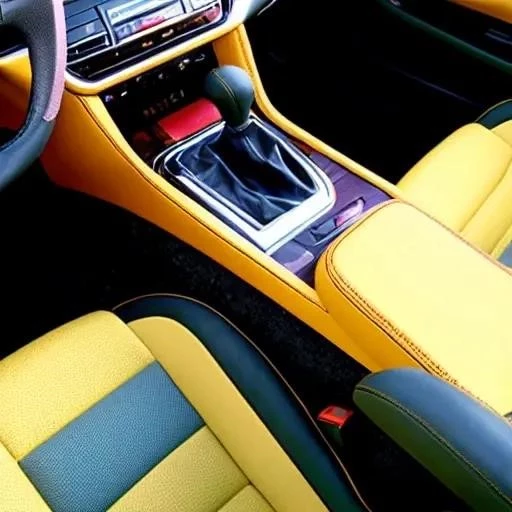
For decades, our cars have been extensions of our personalities, yet their interiors often remained a canvas dictated by factory specifications. We meticulously chose exterior colors and engine sizes, but the space where we spent countless hours was largely standardized, a beige or black uniformity. However, a profound shift is underway, one that is radically transforming how we perceive and interact with our vehicles. The era of generic cabins is rapidly fading, giving way to an exhilarating new chapter where personalizing your car interior isn’t just a luxury—it’s an accessible statement of individuality, a meticulously crafted sanctuary on wheels.
This isn’t merely about adding a new set of floor mats or a funky steering wheel cover; it’s about a holistic reimagining of the automotive cabin. From bespoke upholstery crafted from sustainable materials to ambient lighting systems that adapt to your mood, and from integrated smart tech designed for seamless connectivity to ergonomically sculpted seating, the possibilities are virtually limitless. Drivers are no longer passive recipients of design; they are becoming active co-creators, orchestrating a space that perfectly reflects their lifestyle, their aspirations, and their deepest comforts. This burgeoning trend, driven by technological advancements and a growing demand for unique experiences, promises a future where every journey is undertaken within a truly personalized haven.
Key Aspects of Car Interior Customization
| Category | Description | Benefits | Emerging Trends |
|---|---|---|---|
| Upholstery & Materials | Replacing or re-trimming seats, door panels, headliners, and dashboards with custom fabrics, leathers, Alcantara, vegan leathers, or exotic materials. | Enhanced comfort, unique aesthetics, improved durability, increased resale value, personal expression. | Sustainable materials (recycled plastics, plant-based leathers), smart textiles with integrated sensors, advanced microfibers. |
| Lighting & Ambiance | Installation of custom LED ambient lighting, stargaze headliners, illuminated trim, and customizable color schemes. | Mood enhancement, improved visibility, personalized atmosphere, modern aesthetic, reduced eye strain. | Dynamic lighting synchronized with music or driving mode, interactive light patterns, health-monitoring lighting. |
| Technology Integration | Upgrading infotainment systems, installing custom sound systems, integrating smart home features, advanced driver-assistance system displays, and personalized user interfaces. | Enhanced entertainment, seamless connectivity, improved navigation, increased safety, personalized digital experience. | Augmented Reality (AR) displays, holographic interfaces, AI-powered personal assistants, biometric security. |
| Ergonomics & Comfort | Custom seat modifications (lumbar support, heating/cooling, massage functions), bespoke steering wheels, pedal adjustments, and optimized storage solutions. | Superior comfort, reduced fatigue on long drives, tailored fit for individual body types, enhanced driving experience. | 3D-printed custom components, adaptive seating that adjusts based on posture, personalized climate zones. |
| Design & Aesthetics | Custom paint or hydro-dipping for interior trim, personalized stitching patterns, unique badging, and bespoke accessories. | Distinctive appearance, reflection of personal taste, cohesive design theme, elevated sense of luxury. | AI-assisted design tools, virtual reality (VR) previews of custom interiors, rapid prototyping. |
For more inspiration on automotive interior design trends, visit: Car Body Design ‒ Interior Design
At the heart of this revolution lies a potent combination of cutting-edge technology and a resurgence of bespoke craftsmanship. Innovators are leveraging artificial intelligence to help clients visualize their dream interiors, generating incredibly realistic 3D renderings before a single stitch is made. Imagine stepping into a virtual reality simulation of your car, experiencing different material textures, ambient lighting configurations, and ergonomic layouts, all before committing to a design. This transformative capability significantly reduces guesswork and ensures client satisfaction, democratizing high-end design previously reserved for concept cars.
Moreover, advancements in material science are opening doors to unprecedented levels of personalization. Sustainable, ethically sourced leathers are gaining traction, alongside innovative vegan alternatives that mimic the feel and durability of traditional materials without the environmental footprint. Imagine interiors crafted from recycled ocean plastics, transformed into luxurious, tactile surfaces, or fabrics embedded with micro-sensors that monitor your posture and adjust seating to optimize comfort on long journeys. This marriage of sustainability and smart technology isn’t just a trend; it’s a fundamental shift towards more conscientious and responsive design, promising a future where luxury is synonymous with responsibility.
Industry experts are unanimously hailing this movement as the next frontier in automotive personalization. “The car interior is rapidly evolving from a functional space to a truly experiential one,” explains Dr. Anya Sharma, a renowned automotive psychologist. “It’s becoming an extension of our homes and offices, a ‘third place’ where emotional connection and physical comfort are paramount. Customization allows individuals to curate this critical environment, significantly impacting their well-being and overall driving pleasure.” This perspective underscores the deep psychological benefits of a personalized space, moving beyond mere aesthetics to address fundamental human needs for control and comfort.
The economic implications are also substantial. Customizing your car interior, particularly with high-quality materials and professional workmanship, can remarkably enhance its resale value, setting it apart in a competitive market. A uniquely tailored cabin often signals meticulous care and a discerning owner, attributes highly valued by prospective buyers. Furthermore, the burgeoning ecosystem of specialized workshops, material suppliers, and design studios is creating new job opportunities and fostering a vibrant community of artisans and technologists dedicated to this craft. From local upholstery shops to global design houses, the industry is thriving on this renewed focus on individuality.
Looking ahead, the future of car interior customization is brimming with potential. Imagine cars that learn your preferences over time, automatically adjusting lighting, climate, and even scent profiles based on your mood or destination. Picture 3D printing capabilities allowing for on-demand replacement parts or custom-designed accessories, fabricated right at your local dealership or even in your own garage. The convergence of AI, advanced manufacturing, and material innovation is poised to redefine what’s possible, ushering in an era where every vehicle truly feels like an extension of its owner, a unique mobile masterpiece.
